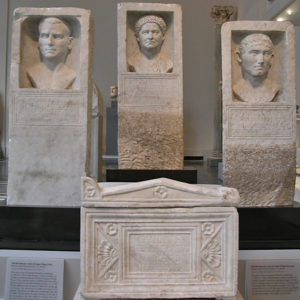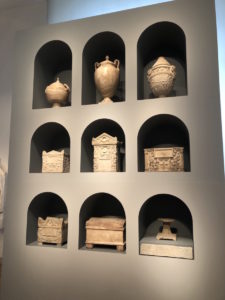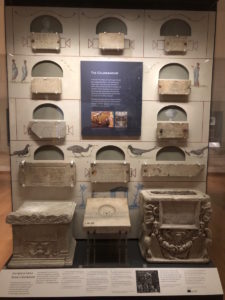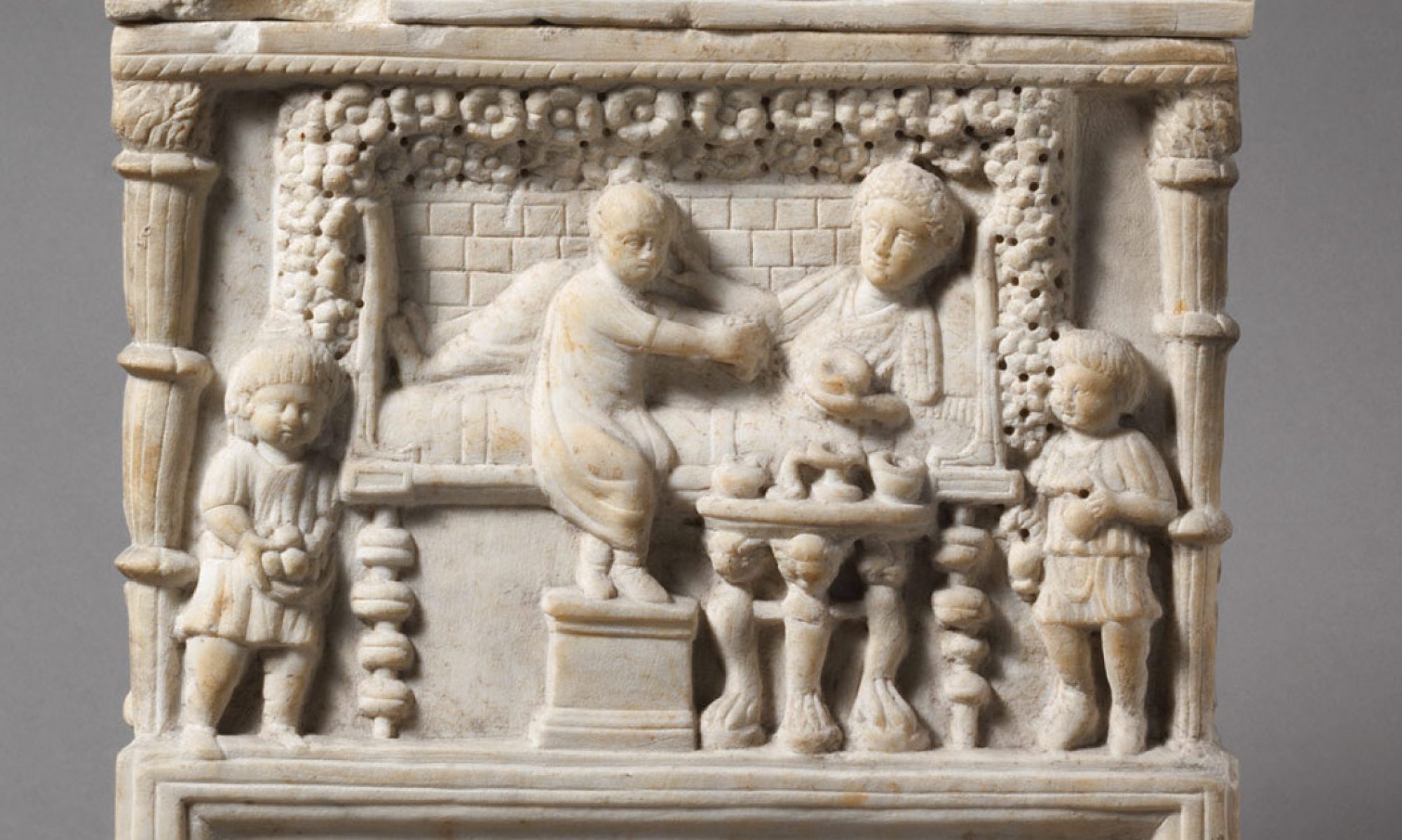<Work in Progress. Page under Construction>
Many museums with antiquities hold at least one cinerary urn, if not more, in their collections. There are certain difficulties, however, in displaying these objects to great effect. This essay considers different modern curatorial strategies currently deployed in museums worldwide and then evaluates how curators have handled problems of display.
Problems with display
Weight. Marble urns can be heavy or bulky despite their relatively small size. Shelving and support must be sufficient to sustain the weight of marble and cost effective enough to make displaying an urn, typically considered humble and comparatively less artful, worth the expense.
Lighting. Lighting for white marble sculpture can be difficult because of shadows. For cinerary urns, however, the use of shadow was crucial in their original locations of dark tombs with minimal or no natural lighting.
Context. Curators must consider to what extent context factors into their display decisions. Different cineraria had slightly different display contexts.
Case Studies
Some museums display an urn in context of archaeologically related objects, particularly other funerary sculpture. The Metropolitan Museum of Art in New York, for example, situates the cinerarium of Gaius Vibius Hero in front of three stelae of the Vibii family.
This cinerarium is not known for certain to come from the same tomb as the Vibii stelae, but it was discovered in a nearby location. This proximity suggests that the familial relationship is highly probable. It is curious, however, that the sculptor’s approach to decoration for the urn is markedly different from the stelae in the ornamental details.
Museums in possession of multiple cineraria, both in marble and other media, more often construct arcuated shelves in multiple registers to mimic columbaria niches, which were a popular type of semi-subterranean tomb used predominately by slaves and freedmen in metropolitan Rome. This type of display creates strong shadows around the urns in the niches. The effect is that the museum visitor stands before urns in a tomb.

Another approach is to mix the previous two methods of curation through the use of fabricated graphics based on authentic material related to cineraria.

In most Italian museums, particularly those in metropolitan Rome, the number of urns far exceeds available space and overrides curatorial concerns. This in turn affects how displays are curated and particularly how context is handled.
The Musei Capitolini maintain one of the largest collections of cineraria.
The Galleria Lapidaria presents a dark hallway evoking a semi-subterranean tomb full of inscriptions and funerary monuments on display. Yellow lighting mimics the light of candles, lamps, or torches.
The Musei Vaticani display cineraria differently throughout the different galleries based on such factors as collection history and decorative concerns.
The reality in many museums is that cineraria stand in storage not on display as they are less of a priority when other sculpture or luxury objects are available.
